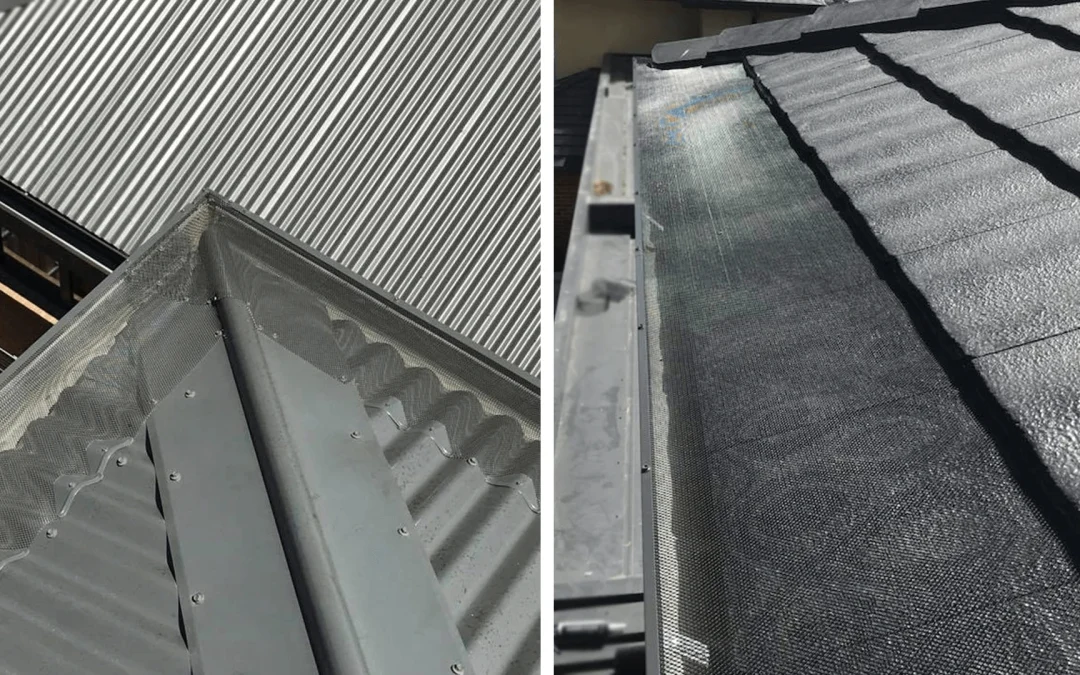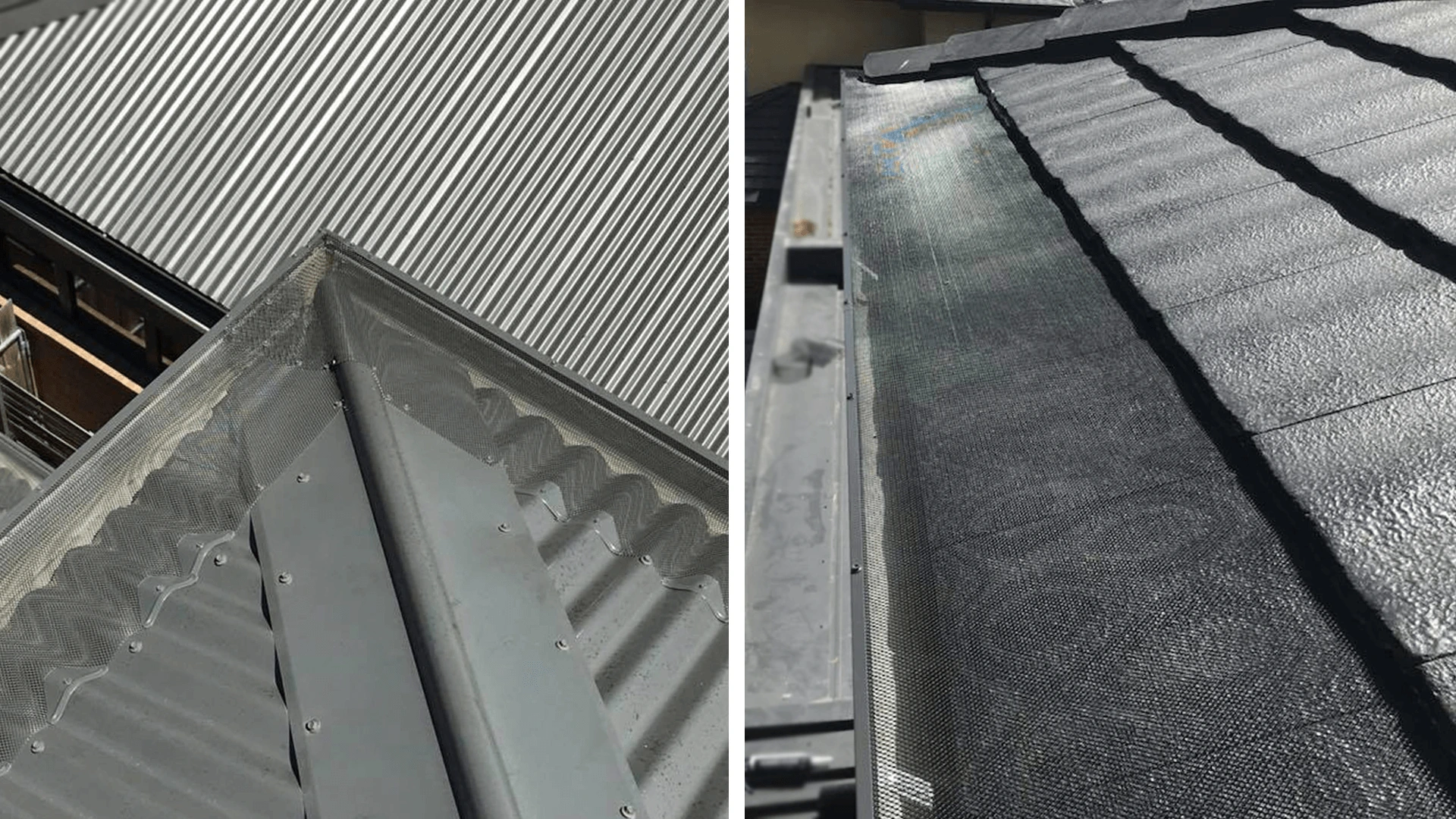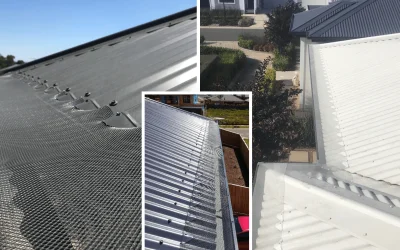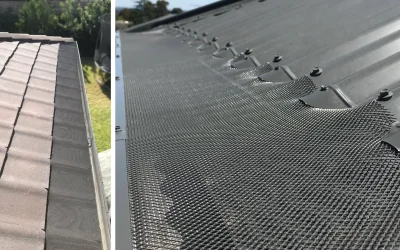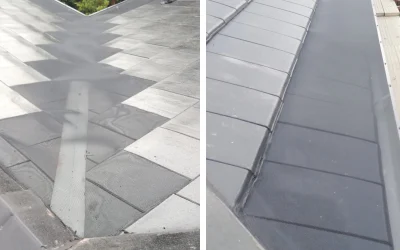Ever heard that strange scrabble above the ceiling at 2am? Or found a wedge of sticks and muck jammed into your downpipe corner? You’re not alone. Roof spaces across Australia are magnets for possums, Indian myna birds, and the occasional rat. The quiet hero in this story is simple and effective: Gutter Guards used the right way; they help you exclude pests humanely while keeping water where it should go.
Below is a practical, research-backed guide to using Gutter Guards as part of humane pest prevention with clear dos and don’ts for possum proofing, bird proofing, and rodent exclusion.
Why start with Gutter Guards?
Think of Gutter Guards as a neat, permanent way to remove the opportunity that attracts pests: cover, nesting nooks, and easy roof access. A quality gutter guard mesh sits over the gutter edge (“over-the-gutter”) so leaves and nesting material shed off while rainwater flows in. It also closes the classic entry gap along the roof line the same space mynas love to exploit and possums’ pad along like a footpath. CPR’s own guidance highlights wildlife benefits, noting that robust gutter guard mesh discourages nesting by birds (including Indian myna) and blocks common access routes for possums into the roof space.
Quick win: a well-fitted over-the-gutter mesh reduces leaf build-up, prevents soggy blockages, and closes the door on opportunistic visitors. It’s a water-management upgrade that doubles as roof pest prevention.
Humane first: what the law and welfare authorities say
Before any “pest control”, there’s one golden rule in Australia: be humane, and follow local rules.
- Possums are protected. In Victoria, for example, possums are protected under the Wildlife Act. Trapped brushtail possums must be released on the same property and within 50 metres of the capture site—relocation elsewhere is prohibited and considered inhumane. Humane management focuses on excluding entry and providing alternative dens (like nest boxes), not harming animals.
- RSPCA Australia encourages coexistence and practical steps: install a possum nest box, identify and block the entry point, and prune branches that serve as a bridge to the roof.
- For Indian myna control, government and welfare guidance stresses humane practice (e.g., approved trap designs, daily checks, food/water/shade for any trapped birds, and adherence to local protocols). Even where trapping is allowed via community programs, humane handling is mandatory.
- For rodent management, codes of practice in NSW emphasise effective and humane methods, with specific standard operating procedures for trapping and baiting (used by licensed professionals). Homeowners should prioritise rodent exclusion and hygiene measures first like closing gaps and controlling harbourage.
Your strategy should start with exclusion. That means sealing access (including with Gutter Guards), tidying attractants, and following lawful, humane steps when additional action is required.
How Gutter Guards help with three common culprits
1) Possum proofing (without harming possums)
Possums are strong, agile, and creatures of habit. Roof edges and gutter lines are their highway. A robust metal gutter guard (aluminium or stainless steel) fitted “ski-slope” style under the first tile or roof rib and to the gutter lip removes footholds and closes gaps along the eaves reducing entry to the roof cavity. CPR’s guidance specifically calls out bird and possum proofing benefits of an over-the-gutter system, while reminding buyers to choose a mesh tough enough to resist a possum’s weight.
Pair your Gutter Guards with humane possum-smart steps:
- Trim branches at least ~1.5 m back from the roof so there’s no launch pad.
- Fit one-way flaps at known entry points (let possums out, not back in) after you’ve confirmed there are no young inside.
- Offer an alternative den with a possum nest box positioned in a sheltered tree on your block.
These steps redirect behaviour rather than punish it aligned with Australian welfare guidance and state rules.
2) Bird proofing for Indian myna and other roof-nesters
Indian myna birds are notorious for colonising gutter corners, valleys and eave gaps—blocking downpipes and soiling the catchment, which also affects rainwater quality. An over-the-gutter gutter guard mesh closes the ledge where nesting kicks off and helps keep the trough clear of sticks and straw. CPR notes that gutter guard mesh can discourage nesting by Indian myna and other pest birds by removing the infrastructure they prefer.
Where myna pressure is heavy, councils and state sites point to humane control programs (community traps, strict welfare protocols, identification to avoid taking native species). Homeowners should follow local guidance and never destroy active nests of native birds. Humane control means correct devices, daily inspection, and shade/water if any bird is contained. Exclusion with Gutter Guards means you often don’t need to go there.
Good practice add-ons:
- Close roofline gaps at internal corners and valleys.
- Keep gutters clear so there’s no cosy substrate to “anchor” a nest.
- Consider corner details and trims during installation to remove small perches birds exploit. (Complete installations that “seal the edge” are known to stop landing and nesting in gutters.)
3) Rodent exclusion (rats and mice)
Rats are minimalists they need a gap, a ledge, and a reason. Block the gap and reduce shelter, and they’ll look elsewhere. Gutter Guards support rodent-proofing by removing the leaf litter and debris that create harborage in gutters and along eaves—and by closing the easy entry route beneath the roof edge. Australian pest guidance repeatedly points to proofing and sanitation as foundations of rodent exclusion; official NSW materials also set humane standards for any control measures that go beyond exclusion.
Helpful habits alongside Gutter Guards:
- Inspect rooflines for cracks, loose flashings, lifted tiles, and open vents; close them with rodent-resistant covers or mesh.
- Trim foliage away from the roof and keep the catchment tidy—less food, less cover.
When Gutter Guards do even more than pest control
Gutter Guards aren’t just about wildlife. CPR’s guidance also explains how gutter guard mesh improves water management, reduces maintenance risk, and can play a role in ember protection in bushfire-prone areas when you choose non-combustible metal gutter guard with the right aperture. (In NSW, fire authorities recommend metal gutter guards as part of bushfire preparation, and AS3959 calls out the principle of ember-guard screening at ≤ 2 mm.)
The same installation details that stop pests tight fit, sealed edges, correct valley treatment also help your gutters flow better in heavy weather and avoid costly ceiling leaks due to overflow.
Choosing the right gutter guard mesh (and avoiding false economy)
Not all products are equal. CPR’s buyer guidance sets out a few smart checks: match mesh to your roof profile (tile vs corrugated), pick non-combustible materials where ember guard performance matters, and make sure the aperture suits your leaf load (fine needles vs broad leaves). Over-the-gutter “ski-slope” systems generally stay cleaner longer and offer better bird proofing and possum proofing than in-gutter inserts.
Handy checklist
- Material: choose a metal gutter guard (aluminium or stainless) for durability and ember performance.
- Aperture: consider ≤ 2 mm if you’re in a bushfire-prone area and want ember guard function.
- Fit: insist on a snug, over-the-gutter mesh install—tucked under the first tile or rib and fixed to the gutter lip—so there’s no lip for birds to land or possums to grip.
- Corners & valleys: ask about corner closures and valley treatments, which are favourite nesting and blockage spots. (Complete edge sealing helps stop pest landings.)
- Maintenance plan: even the best system benefits from a quick annual check, after storms or in heavy leaf zones.
Practical, humane steps for each pest (paired with Gutter Guards)
For possums
- Install Gutter Guards to remove that comfy highway along the eaves.
- Provide a possum nest box as a lawful, humane alternative den.
- Fit one-way exits and block entry (after confirming the roof is empty), prune access branches.
For Indian mynas and other pest birds
- Use gutter guard mesh plus proper corner finishes to deny ledges and footholds.
- If pressure persists, consult local humane programs and follow approved protocols (identification, daily trap checks, welfare measures). Exclusion comes first.
For rats
- Fit Gutter Guards and close gaps at eaves, vents, and flashings for rodent exclusion.
- Follow humane codes if additional control is necessary; consider licensed professionals who comply with NSW SOPs.
What CPR Gutter Protection offers (and what they don’t)
CPR focuses on high-quality Gutter Guards, gutter guard mesh, and related protection for Victorian homes, with clear benefits around water management, wildlife blocking, and long-term durability. Their public materials specifically discuss bird proofing and possum proofing outcomes from robust, over-the-gutter installations, plus mesh choices and best-practice fitment. They provide quotes, colour-matched mesh options, and installation guidance not wildlife removal services. If lawful removal is needed (e.g., licensed possum work, humane myna programs, rodent control under code), you’d contact the relevant licensed provider or local authority while using Gutter Guards as your first-line exclusion.
Care and maintenance: small effort, big pay-off
Even the best Gutter Guards benefit from an eye over the roof after wild weather. CPR suggests a quick inspection at least annually—clear any build-up at valleys, confirm fixings are snug, and keep downpipes clear. In bushfire-prone or heavy-leaf suburbs, consider more frequent checks. It’s minimal effort that preserves pest-blocking and water-flow benefits year-round.
The human-friendly way to keep animals out
You don’t need a war with wildlife. You need good design. Gutter Guards installed properly quietly change the roof edge from a welcome mat into a no-drama boundary. They keep leaf litter out, water moving, and wildlife out of harm’s way. And when the situation calls for more than exclusion, Australian welfare guidance gives clear, humane steps that respect both the law and the animals.
Simple truth: close the gap, steer behaviour, protect the home. That’s what well-chosen Gutter Guards do.
Want a Victorian specialist who understands both water and wildlife realities?
CPR provides gutter guard mesh solutions, colour-matched installs, and practical advice on keeping leaves and roof pests out without making a fuss. If you’re weighing up metal gutter guard options, roof profiles, or just want a clean, secure edge, have a yarn with a local installer who treats roofs like their own.
FAQs
1. Do Gutter Guards really help with possums?
2. Can I relocate possums elsewhere?
3. What about Indian myna nests?
4. Will Gutter Guards help against rats?
5. Do Gutter Guards help with bushfire prep?
Social Share:
Related Posts
Gutter Guards for Flat & Low-Slope Roofs: Design and Drainage Considerations
Flat and low-slope roofs can be stunningly simple from street level, yet the drainage…
The Smart Way to Keep Your Gutters Clear with Gutter Guards
Keeping gutters clear is one of those home maintenance tasks that often gets neglected…
Are Your Gutter Guards Ready for Australia’s Intense Summer Rains?
As the Australian summer approaches, bringing with it the promise of intense rains…
